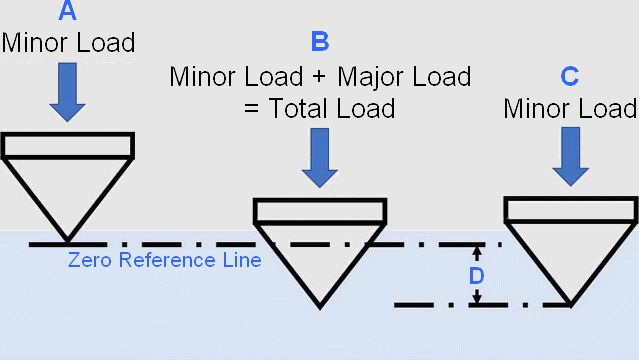Are Pottery Wheels Expensive?
Pottery wheels have been used for thousands of years to shape clay into pots, bowls, vases and other ceramic items. A pottery wheel allows a potter to rotate the clay as they mold it into the desired shape. Pottery wheels range from simple devices operated by hand or foot to modern electric-powered wheels with variable speed controls. With the rise of pottery as a hobby and art form, pottery wheels have become more widely available. This leads many beginners to wonder – are pottery wheels expensive?
Types of Pottery Wheels
There are three main types of pottery wheels: kick wheels, electric wheels, and manual wheels.
Kick Wheels
Kick wheels, also known as treadle wheels, require the potter to operate the wheel by “kicking” a foot pedal that spins the wheel (PotteryCrafters). The potter must maintain the speed of the wheel with the pressure from their foot. Kick wheels are inexpensive and do not require electricity, making them a good choice for beginners or hobbyists on a budget.
Electric Wheels
Electric pottery wheels use an electric motor to turn the wheel head at a consistent speed, controlled by a foot pedal or switch (SoulCeramics). Electric wheels allow potters to keep both hands on the clay and provide consistent speeds for throwing. They are the most commonly used wheels by professional potters and serious hobbyists.
Manual Wheels
Manual pottery wheels are operated by turning the wheel head directly with your hands. They allow for full control over speed but require more physical effort from the potter. Manual wheels can be useful for handbuilding and decorating. They are less common than electric or kick wheels (Botpots).
Cost Range
The price range for pottery wheels can vary greatly depending on the type and features. Basic, beginner tabletop wheels typically cost $200-$500, while larger, heavy-duty wheels designed for frequent use often cost $600-$2,000 (Source). High-end professional wheels with advanced features can cost upwards of $2,500.
Some key factors that affect the cost of a pottery wheel include (Source):
- Size and weight – Larger, heavier-duty wheels cost more.
- Motor power – More powerful motors allow faster spinning.
- Features – Advanced controls, adjustable speed, forward/reverse, etc. add cost.
- Materials – Cast iron frames are more durable and expensive than plastic.
- Brand name – Premium brands charge more.
- Warranty – Longer warranties increase the price.
So while basic starter wheels are relatively affordable, heavy-duty professional models can be a significant investment.
Average Cost

The average cost of a pottery wheel can vary greatly depending on the type and features. Here’s a look at the typical price range for the main types of wheels:
Electric Wheels: $600 – $2,000. Electric wheels that plug into a standard wall outlet range from about $600 for a tabletop model to $2,000 for a heavy-duty wheel with lots of options. Expect to pay $1,000 – $1,500 for a good quality mid-range electric wheel.
Kick Wheels: $300 – $700. Simple kick wheels without electricity can cost between $300 – $500. Larger or more advanced kick wheels with special features range from $500 – $700.
Manual Treadle Wheels: $100 – $300. Manual treadle wheels that are operated using a foot pedal and don’t require electricity tend to cost $100 – $300.
Low-Cost Options
There are a few ways to get an inexpensive pottery wheel if you are on a tight budget:
Used Wheels – Check classified ads, Craigslist, Facebook Marketplace, eBay, and other sites for used pottery wheels. Many potters upgrade over time and sell their starter wheels at a discount. With some searching, you can often find a used wheel for under $100.
Build Your Own – Some potters have built their own wheels from scratch using basic materials like plywood, lazy susan bearings, and an electric motor. With some DIY skills, you may be able to build a functional wheel for under $50. There are guides and plans available online.
Mini/Tabletop Wheels – Small tabletop kick wheels start around $50 on Amazon. While limited, these can work for beginning practice and small projects. Upgrade to a full-sized wheel later on.[1]
Look for Sales – Check manufacturer websites for sales and coupons. Sign up for promotional emails from pottery supply retailers to get alerts on deals.
Buy Used Parts – Motors and wheels can be purchased separately used. Combine with new parts to customize an inexpensive wheel.
Cost Considerations
Besides the initial cost of purchasing a pottery wheel, there are ongoing costs to consider as well. These include:
Clay – Pottery clay can range from $20-$50 for a 25 lb bag. Clay is a consumable material that will need to be replenished regularly. Expect clay costs to be a continual expense.
Tools – Basic pottery tools like ribs, trimming tools, cutting wires, etc. can cost $5-$25 each. As you advance, investing in additional specialized tools will be required. Budget at least $100-200 for an initial set of basic tools.
Lessons – Taking pottery classes at a local studio averages $150-$300 per 8-10 week course. Private lessons with an instructor range $30-$60 per hour session. Developing wheel skills requires ongoing instruction for most beginners.
Studio expenses – Those working from a home studio will need to budget for items like aprons, cleaning supplies, shelving, sink, ventilation, etc. Studio setup can cost $500-$2000+ depending on space requirements.
While pottery wheel prices vary widely, additional costs for clay, tools, lessons, and studio space are ongoing expenses to factor in beyond the initial purchase. Developing pottery skills requires an investment in materials and education over time.
Value for Money
When considering the value of a pottery wheel purchase, it’s important to evaluate the durability, quality, and features to determine if an expensive model is worthwhile or if a more budget-friendly option will suffice. High-end wheels often use strong metal frames, high-powered motors, variable speed options, and other convenient features that improve the throwing experience. While these come at a premium price, they typically hold up well over many years of frequent use. Cheaper wheels may be prone to wobbling, overheating, or breakdowns after moderate use.
Here are some key factors to evaluate when deciding if an expensive wheel is worth the investment:
- Durability of the frame and wheel head – Sturdy steel or cast iron lasts much longer than plastic bases.
- Motor power and torque – More power allows throwing larger pieces and heavier clay. Potters working with sculpture or large vessels need the highest power motors.
- Variable speed options – Digital speed control allows precise fine-tuning as you throw. Fixed speeds are more limiting.
- Size of wheel head – Larger gives you more room for throwing large pieces. Smaller heads save space.
- Noise level – More expensive motors run quieter.
- Accessories included – Upgrades like splash pans often come standard on high-end models.
While cheaper wheels work fine for beginners or hobbyists, serious potters throwing frequently or creating large pieces gain tremendous benefits from the performance and durability of premium wheels. For those who can afford it, investing more upfront prevents frustrations and leads to a wheel that can last decades when properly maintained.
Alternatives
For those on a tight budget or looking for a change of pace from the wheel, there are several alternatives to consider for making pottery without buying an expensive wheel. Two of the most popular and accessible options are:
Hand Building
Hand building involves shaping clay entirely by hand, without the use of any machinery like a pottery wheel. Techniques like pinch pots, coil building, and slab construction allow you to create unique pottery using only your hands and some basic tools like ribs and loop tools. Hand building is very beginner friendly and lets you work at your own pace without an expensive wheel. This article provides an excellent introduction to making pottery by hand.
Slab Rollers
Slab rollers are simple mechanical devices to roll out flat sheets of clay quickly and evenly. While not as versatile as a wheel, they allow you to create hand-built slab work much more efficiently. Slab rollers are an affordable alternative starting around $100. Rolling your own slabs by hand is also an option.
With some creativity, hand building methods can produce remarkable pottery without a traditional wheel. The slower pace can also be more relaxing and intuitive for beginners.
Conclusion
To recap the main points, pottery wheels are not necessarily expensive. While high-end wheels can cost thousands of dollars, entry-level pottery wheels often fall in the $200-$600 range. With some shopping around and buying used, costs can be lowered further. Ultimately, pottery wheels are a valuable investment for serious potters that provide essential functionality. Though the initial cost may seem high, a quality wheel should last for many years of creative use.
For those looking to save money, consider buying a used wheel, building your own, or using a kick wheel. Take the time to identify your needs and budget to find the most affordable option that still allows you to pursue pottery as a hobby or profession. Invest in a quality wheel that will stand the test of time and provide excellent return on investment through years of creative work.
References
Pottery Making Illustrated. “Potter’s Wheel Buyer’s Guide.” Accessed March 1, 2023.
Ceramic Arts Network. “Electric, Kick & Treadle Wheels: What’s the Difference?” Accessed March 1, 2023.
The Spruce Crafts. “A Buyer’s Guide to Pottery Wheels.” Accessed March 1, 2023.
Craftsy. “How Much Does a Pottery Wheel Cost?” Accessed March 1, 2023.
Amazon. “Pottery Wheels.” Accessed March 1, 2023.
Etsy. “Pottery Wheels.” Accessed March 1, 2023.
Blick Art Materials. “Pottery Wheels.” Accessed March 1, 2023.
Dick Blick Art Materials. “Pottery Wheels & Equipment.” Accessed March 1, 2023.
The Ceramic Shop. “Potter’s Wheels.” Accessed March 1, 2023.
Axner. “Electric & Kick Pottery Wheels.” Accessed March 1, 2023.



